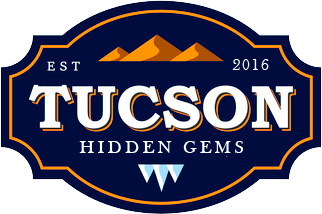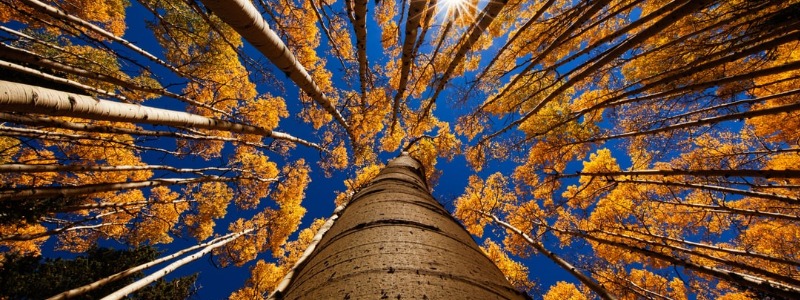Flagstaff City Guide
For many visitors of northern Arizona, Flagstaff is a town they remember passing through on their way to the Grand Canyon. But Flagstaff has so much more to offer. Every season in Flagstaff has something different to offer.
Flagstaff, Arizona is one of our favorite weekend getaway spots from Tucson. Why? It’s only four hours away, it’s always cooler, and we love the vibe there. Flagstaff is an outdoorsy town and the people there are very laid back and welcoming. So it’s nice to unplug and get some R&R there, away from the hustle and bustle of the city.
A few of the highlights in Flagstaff are the mountains, the trees, and the parks. It’s just so green there, which is unusual for us to see since we live in a desert. In addition to the lovely outdoors, there are some great drinking and eating spots in “Flag” (what the cool kids call it).
Flagstaff Attractions
The Arboretum at Flagstaff occupies 200 acres of ponderosa pine forest with a visitor center, gift shop, children’s garden, wildflower meadow, herb garden and solar greenhouse. (928) 774-1442.
One other option to checkout while in Flag is the Lowell Observatory. It is one of the oldest observatories in the U.S. and was founded by Percival Lowell. It is most known for its Pluto Discovery Telescope, used by Clyde Tombaugh in 1930 to discover the dwarf planet Pluto. The Lowell Observatory features hands-on exhibits and a scenic campus. Tours and programs offered year round. (928) 774-2096.
The Museum of Northern Arizona provides a good introduction to the native peoples and natural science of the Colorado Plateau region. (928) 774-5211.
In winter, the Arizona Snowbowl features 2,300 feet of vertical drop, average snowfall of 260 inches, 31 trails, 4 chairlifts, full service rental shop. Located 14 miles north of Flagstaff. (928) 779-1951. t will be busier on the weekend so take off of work early and get to Snowbowl for a fun day on the mountain. If it’s winter time then you’ll get some fun time skiing or snowboarding! Check their website to see what the conditions are like. Ski lift tickets typically range from $35-63 depending on the day. If you’re going during a warm time of year, don’t worry. You can still take the ski lift up to the top of the mountain and it’s totally worth it! They have the scenic chair lift that is so gorgeous to do during the fall when leaves are changing colors on the trees. Once you get to the top you can do a short hike and admire the views of Flag.
We really love going to Buffalo Park. It’s a quiet but large park where you can do some walking or hiking. One time we chose to have a picnic there! We found a shaded spot under a tree and just relaxed with some snacks in hand and Sparky the drone up above to capture the moment.
Other popular sites nearby include the dormant volcanos at Sunset Crater National Monument, the Indian ruins at Wupatki and Walnut Canyon, and Meteor Crater (the world’s largest).
Flagstaff Extreme is an adventure course up in the trees! This was our all-time favorite thing to do in Flagstaff. They also have a zip-lining course that is separate, however we recommend you do the adventure course because it includes some ziplines in it.
The adventure course has five parts to it for $52. You can stop at any time if you get tired. Most people do not complete all five parts… but we were determined. Thanks to our teamwork and motivating each other, we made it through the entire course in about 3.5 hours. Not going to lie, it was tough! It required a lot of patience, balance, strategy, and strength. Yet at the same time, it was freaking awesome! We had so much fun and enjoyed that bonding experience.
Winter in Flagstaff
In the winter the San Francisco Peaks have great skiing and sledding at Arizona Snowbowl. The resort offers skiing and snowboarding for all levels. Opening and closing dates and hours are according to snowfall, which varies tremendously from year to year. Some years the resort can stay open from Thanksgiving through March, while other years the resort may only be open for few days. Snow Bowl is located just seven miles North East of Flagstaff on Highway 180.
Spring in Flagstaff
If visiting Flagstaff during early spring, Grand Falls is a must-see. Located only 30 miles out of town, Grand Falls offers breathtaking views. Massive quantities of chocolate-colored water flow through the falls as water drags sediments through rabbits and over rocks turning the water a dark reddish color matching the surroundings.
The sight is however a seasonal view, as the part of the Little Colorado River, which runs through the falls, only runs late winter and early spring. In dry years it might not run at all. For surefooted visitors, the hike to the bottom of the falls is short and easy and has a great view. For the more adrenaline-seeking, a bit of rock climbing will get you to the falls themselves. To get to Grand Falls drive 13 miles on Leupp Road, take a left onto Reservation Road #70. The drive to Grand Falls is a little rough and it is not recommended for low clearance vehicles on the last part of Road #70 which is a non-maintained dirt road.
Summer in Flagstaff
Summer transforms Flagstaff into a cultural melting pot when tourists and locals gather downtown. Cafes, restaurants, and bars drag chairs and tables out on the sidewalks while street musicians entertain tourists on Heritage Square in the center of Historic Downtown Flagstaff.
At Arizona Snowbowl, one of the chairlifts is converted into the Scenic Skyride, which takes you 11,500 feet up the mountain to incredible views of Flagstaff and its surroundings. Bring warm clothing as the temperature drops considerably on the way to the top.
Year-round in Flagstaff
Year-round Flagstaff and its surroundings have great hiking locations for all levels of hikers.
On the east side of town, many trailheads line the main roads where ruins of Native American villages can be found after just short hikes into the hills. When entering the remains of the villages it is important to be respectful and not take anything with you when you leave. Great superstition surrounds these areas and it is not only disrespectful to gather relics as souvenirs, it is also considered very bad luck and is illegal.
Flagstaff History
In the mid-1800s, a expedition party led by General William Palmer rode into the scenic area below the San Francisco Peaks to scout routes for the Atlantic & Pacific Railroads. Impressed with the “pure air and fine weather”, the General wrote: “It has every attraction: health, scenery, sky, elevation, climate and proximity to the greatest natural curiosity on this continent … the Grand Canyon.” It’s still an apt description of the region today.
Thomas F. McMillan, a Tennessean and wily adventurer, was among the first settlers in the area. In the summer of 1876, McMillan hosted a group of Boston pilgrims journeying west. To celebrate the July 4th Centennial, legend has it that the pilgrims trimmed the bark from a tall pine tree, then used it as a staff for the American flag. Left standing, the staff became a much used trail marker. When, in 1881, a post office and a tiny tent camp was erected, the settlers agreed to name the area “Flag Staff.” The name stuck.
Today, Flagstaff (called “Flag” by the locals) is the seat of Coconino County. At an elevation of almost 7,000 feet, Flagstaff is among the highest cities in the U.S. It has a distinct four-season climate and boasts the highest point in the state: 12,643-foot Humphreys Peak. Summer temperatures average 20 degrees cooler than Phoenix and winter affords some of the best skiing in the Southwest. The city is surrounded by the Coconino National Forest, a picturesque region of pine trees, lakes and rivers. In the historic downtown area, you can wander among quiet cafes, antique shops and other specialty establishments housed in well-tended, turn-of-the-century buildings.

